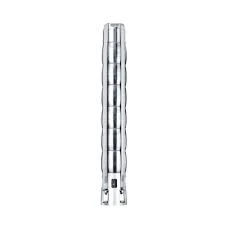Dhj . 25, 2024 23:39 Back to list
submersible pump not lifting water
Troubleshooting a Submersible Pump Not Lifting Water
Submersible pumps are essential devices for a wide range of applications, from draining flooded basements to irrigation systems. However, there are instances when a submersible pump fails to lift water, which can be a frustrating experience for homeowners and contractors alike. Understanding the potential causes behind this malfunction is crucial for effective troubleshooting and repair.
Understanding Submersible Pumps
A submersible pump is designed to operate while submerged underwater. They are equipped with a sealed motor that prevents water from entering the electrical components and causing damage. Typically, these pumps are used to move water from a lower elevation to a higher one, utilizing a series of impellers that create pressure to push water upwards. Despite their effectiveness, certain challenges can prevent them from functioning properly.
Common Reasons for Pump Failure
1. Electrical Issues One of the most frequent causes of a non-operational submersible pump is a power problem. Check to ensure that the pump is receiving electricity. This includes inspecting the circuit breaker, ensuring the pump’s power cord is intact, and looking for any blown fuses. A malfunctioning float switch can also cause interruptions in power supply.
2. Blocked Impeller Debris such as sand, mud, or even small rocks can obstruct the impeller's movement. This blockage prevents the pump from effectively lifting water. Regular maintenance, including clearing any debris from the pump intake, can mitigate this issue. In severe cases, disassembling the pump may be necessary to clean out any stubborn blockages.
3. Pump Size and Capacity Using a pump that is not suited for the specific application can lead to problems. If the pump is too small for the amount of water being moved, it may struggle or fail to lift water altogether. It's essential to consult the pump’s specifications and match it to the required operational conditions.
4. Air Locks An air lock occurs when air becomes trapped in the pump or piping, preventing water from flowing. This can happen if the pump has not been properly primed or if there is a gap in the suction line. To resolve this, try gently tapping the pump or ensuring that the discharge pipe is free of any kinks or bends.
5. Worn Impellers or Seal Damage Over time, wear and tear can cause significant issues with the pump’s internal components. Damaged impellers may not generate the necessary pressure to lift water, while worn seals can lead to leaks, reducing efficiency. Regular inspections can help identify these issues before they lead to a complete pump failure.
6. Submersible Depth If the pump is submerged deeper than its rated operational depth, it may struggle to function properly. Each pump is designed to operate at a specific depth range, and exceeding this can strain the motor or cause it to overheat.
submersible pump not lifting water

Troubleshooting Steps
To troubleshoot a submersible pump that is not lifting water, follow these steps
1. Safety First Always disconnect the power supply before performing any maintenance on the pump.
2. Inspect Electrical Connections Ensure all electrical connections are secure, and check for any signs of damage.
3. Check for Blockages Remove any debris or obstructions around the pump and check the impeller for blockages.
4. Examine the Pump’s Specifications Verify that the pump is appropriate for your specific needs based on its size and capacity.
5. Listen for Unusual Sounds While the pump is running (with caution), listen for unusual noises that may indicate mechanical problems.
6. Consult a Professional If the issue persists after troubleshooting, consult a professional plumber or pump technician.
Conclusion
A submersible pump not lifting water can stem from a variety of issues, ranging from electrical problems to mechanical failures. By understanding the potential causes and taking systematic troubleshooting steps, users can often resolve the issue efficiently. Regular maintenance and checks can also prevent future problems, ensuring that your submersible pump operates smoothly when you need it the most. Whether for residential or agricultural use, a well-functioning submersible pump is an invaluable asset for managing water efficiently.
-
submersible-sump-pump-auto-drainage-for-crawlspaces
NewsAug.22,2025
-
solar-powered-stainless-steel-submersible-well-pump-setup
NewsAug.22,2025
-
stainless-steel-well-pump-flow-rate-optimization
NewsAug.22,2025
-
water-filled-submersible-pump-fish-farm-oxygenation
NewsAug.22,2025
-
submersible-pump-in-aquaculture-and-fish-farming
NewsAug.22,2025
-
deep-well-submersible-pump-for-drought-areas
NewsAug.22,2025
-
 submersible-sump-pump-auto-drainage-for-crawlspacesCrawlspaces, those narrow areas beneath homes, are prone to water accumulation due to leaks, groundwDetail
submersible-sump-pump-auto-drainage-for-crawlspacesCrawlspaces, those narrow areas beneath homes, are prone to water accumulation due to leaks, groundwDetail -
 solar-powered-stainless-steel-submersible-well-pump-setupHarnessing solar energy to power stainless steel submersible well pumps is a sustainable and coDetail
solar-powered-stainless-steel-submersible-well-pump-setupHarnessing solar energy to power stainless steel submersible well pumps is a sustainable and coDetail -
 stainless-steel-well-pump-flow-rate-optimizationIn various applications like agriculture, domestic water supply, and industrial use, the flow rate oDetail
stainless-steel-well-pump-flow-rate-optimizationIn various applications like agriculture, domestic water supply, and industrial use, the flow rate oDetail
